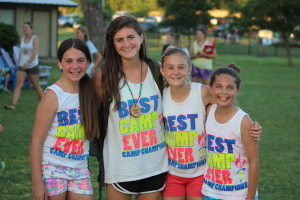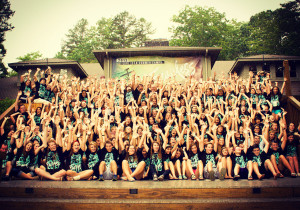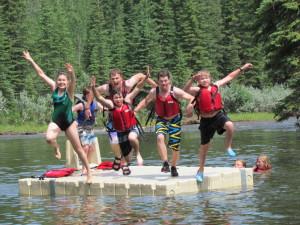
Why the best social networks must grow organically
Target audience: Community manager, marketing professionals, PR pros, brand managers, entrepreneurs, businesses, nonprofits, educators, Web publishers, journalists.
 Way back in 2000, Amy Jo Kim wrote the book on best practices and strategies on how to start, build, grow, and maintain online communities in Community Building on the Web : Secret Strategies for Successful Online Communities.
Way back in 2000, Amy Jo Kim wrote the book on best practices and strategies on how to start, build, grow, and maintain online communities in Community Building on the Web : Secret Strategies for Successful Online Communities.
If you can find a copy, buy one. Everything Amy Jo Kim recommends can be mapped perfectly to Web 2.0 and social network services — namely, her belief that communities need to grow organically and not be rigid, planned, communities. That is, more like London than Paris.
Start out as a boutique and then grow in response to the “neighborhood” and the market. A toy store in a retirement community might sound like a bad idea because a toy store should be marketed to parents; actually, grandparents do a lot of the spoiling so allowing grandparents to easily and effortlessly shop for and buy toys for their grand children is a really great idea.
Your community, as it grows, is not really your choice. A lot of the decision as to who and what your community becomes depends on the initial members. Your first 10 members will define your 100 will define your 1,000 will define your 1,000,000. The only choice you have as a business and as a host is who you invite to be your first 10-100 members. After that, you sort of have to get out of the way and then meet the needs of this new thing you have created.
Back in the late ’90s I had an online community about memetics, memes.org, which I wanted to be a place in which to discuss memes, memetics, popular culture, and other social- and pseudo-scientific stuff. Well, after a couple years, the community evolved itself into a community that was really fetishing the existence of alien life, of a global conspiracy, of the reptilian aliens, and of the Bilderberg’s control of all commerce and all choices, the New World Order.
 If I hadn’t let the community find itself and kept on steering the community back to my vision, I would have pruned memes.org too dearly, I would have starved off the members and their interests, and I would have alienated the real core of my users, the one in 1,000 who spent a lot of their time making the community ultimately a success.
If I hadn’t let the community find itself and kept on steering the community back to my vision, I would have pruned memes.org too dearly, I would have starved off the members and their interests, and I would have alienated the real core of my users, the one in 1,000 who spent a lot of their time making the community ultimately a success.
Most social networks, such as Friendster and Orkut, end up “losing control” of their communities and then spend their entire life trying to being the mission back into line. Orkut evolved into a Brazilian social network and Friendster is now an Asian social network. Instead of selling the sites to Brazilian and Asian investors, they instead try desperately to steer them back into line.
Why building a social networking service in stages is preferable
 A community is indeed a family. In order to really have a successful family, you have to let its members to be themselves and trust you. Otherwise, family members will feel that their patriarch and matriarch are disappointed in them.
A community is indeed a family. In order to really have a successful family, you have to let its members to be themselves and trust you. Otherwise, family members will feel that their patriarch and matriarch are disappointed in them.
Do all of your scheming before you launch. After your first hundred members get started, you pretty much should get the hell out of the way and let the community self-organize. You can be a gardener but don’t practice bonsai.
Don’t alienate your online community. Let them grow and have fun and play. Give them the gifts they want, not the gifts you want to give; offer them — your members — the toys with which they want to play, even if it is the cardboard box in which the toy was packaged. And, in the end, don’t judge your community.
Play with them. Enjoy them. Love them.
The beauty of an social network is that it can easily be built in stages. In fact, building an social networking service in stages is preferable, and here’s why: Users don’t like their user experience dictated to them, they want their user experience and preferences to define the innovation of the social network.
 It makes everything easier, actually. There have been many applications and virtual spaces that have been very expensively designed, like a terrarium or like a theme park, only to be rejected by the members. Usually, at this stage, too much money, time, and investment has been put into the project, so all the energy is spent to try to persuade the members of all the untapped potential and value they’re missing by not doing as they’re told.
It makes everything easier, actually. There have been many applications and virtual spaces that have been very expensively designed, like a terrarium or like a theme park, only to be rejected by the members. Usually, at this stage, too much money, time, and investment has been put into the project, so all the energy is spent to try to persuade the members of all the untapped potential and value they’re missing by not doing as they’re told.
Orkut & Friendster are great examples of social networks that were too rigid in their design, expecting the users to adopt their tools, their styles, and their values of community.
Actually, Friendster is a perfect example. The creators of Friendster made it quite closed and structured, and the designers felt a certain amount of stewardship over its users’ experience. Friendster wanted to define what a community was and should be. People you know and who are either your personal friend or a friend of a friend.
 Children do not like having the toy’s box taken from them just because they’re playing with the box and not the toy. It all comes down to play. People who want to build deep, important, and intimate relationships should be allowed; people to who want to compete should have lots of ways to do so, and people who want to date, meet single, and flirt should be able to do that, too.
Children do not like having the toy’s box taken from them just because they’re playing with the box and not the toy. It all comes down to play. People who want to build deep, important, and intimate relationships should be allowed; people to who want to compete should have lots of ways to do so, and people who want to date, meet single, and flirt should be able to do that, too.
Before you start — before you create your own social networking site, your own social media — be sure to check to make sure that you actually need to. It could be that all you need is to do a better job of being an engaged participant on communities that already exist, be it on Facebook or Google Plus groups or pages or on messages, forums, or even subreddits.
Go forth and facilitate.
H/T to Attorney April Cockerham for her contributions to this postChris Abraham is a partner in Socialmedia.biz. Contact Chris via email, follow him on Twitter and Google Plus or leave a comment below.
Leave a Reply